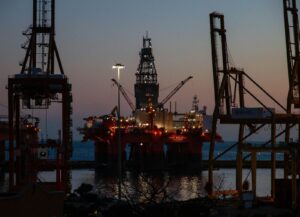Deep-sea volcanic eruptions release enough energy to power the whole of the U.S, according to research published in the journal Nature Communications.
Data gathered by remotely operated vehicles deep in the North East Pacific has revealed a link between the way ash is dispersed during submarine eruptions and the creation of large and powerful columns of heated water rising from the ocean floor, known as megaplumes.
The megaplumes contain hot chemical-rich water and act in the same way as the atmospheric plumes seen from land-based volcanoes.
Researchers at the University of Leeds have developed a mathematical model which shows how ash from these eruptions spreads several kilometres from the volcano.
This revealed that the rate of energy released and required to carry ash to the observed distances is extremely high – equivalent to the power used by the whole of the U.S.
Dr David Ferguson, from the School of Earth and Environment, said: ‘The majority of Earth’s volcanic activity occurs underwater, mostly at depths of several kilometres in the deep ocean but, in contrast to terrestrial volcanoes, even detecting that an eruption has occurred on the seafloor is extremely challenging. Consequently, there remains much for scientists to learn about submarine volcanism and its effects on the marine environment.
‘Observing a submarine eruption in person remains extremely difficult but the development of instruments based on the seafloor means data can be streamed live as the activity occurs.
‘Efforts like these, in concert with continued mapping and sampling of the ocean floor means the volcanic character of our oceans is slowly being revealed.’
Dr Sam Pegler from the School of Mathematics added: ‘Our work provides evidence that megaplumes are directly linked to the eruption of lava and are responsible for transporting volcanic ash in the deep ocean. It also shows that plumes must have formed in a matter of hours, creating an immense rate of energy release.’
Photo Credit – Pixabay
















